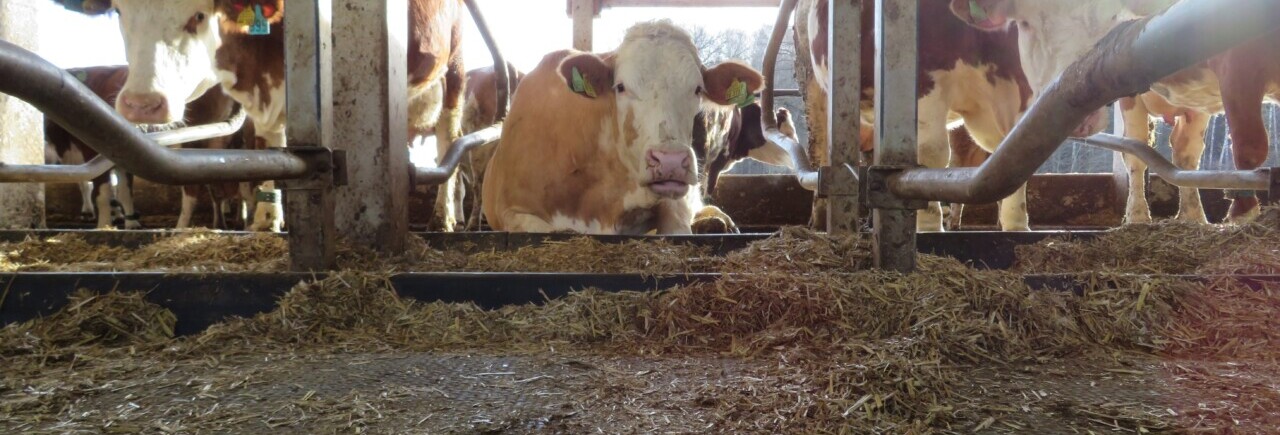
07. March 2024
Rubber barn flooring not only improves animal welfare and cow comfort. They can make a significant contribution to keeping the herd healthy in general. Claw diseases and mastitis can place a heavy burden on the farm budget and can even lead to the loss of an animal.
Prevention before rehabilitation – who hasn’t heard this saying? How much truth there is in it can be quickly understood using the example of a good rubber stable flooring.
Dairy cows in Germany and many other countries generally spend 24 hours a day, 365 days a year in a loose housing system. On average, 70 cows live in a herd, but 1000 animals are also possible. Regardless of the size of the group, the loose housing and lying areas must meet the high standards of permanent housing.
Hygiene undoubtedly plays a key role, as the most common and cost-intensive disease in dairy cows is mastitis (inflammation of the udder gland). In the USA, the disease causes an estimated 2 billion US dollars in losses for farms (treatment costs and loss of sales). The pathogens are mostly bacteria and fungi, but viruses or certain types of algae can also cause the inflammation. As moisture favours the spread of pathogens, it is particularly important to keep the lying areas dry and clean. An HT KombiBox is a soft-bed system for deep boxes, but combines all the advantages of a deep box with those of a high box. In the front area, it offers comfortable softness thanks to double composite foam under an 8 mm thick, non-slip rubber mat. At the rear, a bed of suitable bedding ensures dryness and a clean surface on which the udder can lie softly. Raised cubicles with a seamless rubber surface, such as the N33, are also much easier to clean than areas with individual rubber mats. Joints and gaps often form spaces in which urine, faeces and dirt collect. This makes manual cleaning time-consuming and laborious. This creates the ideal environment for pathogens to multiply, which then easily find their way to the udder.
Of course, the pathogen pressure in any lying area can only be minimised, as microorganisms can be found in the cleanest barn. Nevertheless, the available means are absolutely preferable to any treatment by a vet that is necessary in the event of illness.
Another example of preventive stable management is the walking routes. Prolonged walking and standing on unsuitable floors leads to claw diseases and thus often to postural deformities. A vicious circle is quickly set in motion that can only be broken with a great deal of effort and high costs.
Optimally equipped walkways are slip-resistant and easy on the joints. Rubber flooring fulfils these requirements and the animals are proven to move more safely and healthily. The claw mechanism can work in a natural way. Fall injuries due to slippery floors are minimised. Hygiene is also essential when it comes to hoof health. With their grooved profile, walkway surfaces such as the N26 ALLEY help urine to run off the standing or walking surface quickly. This is favoured by a 6 % gradient to the grooves and the proven hammer tread with its fine veins. The hoof remains drier and more resistant. Such a floor, combined with a manure scraper system that clears the walkway at a good frequency, is the optimised prevention of hoof diseases such as stress fractures (floors that are too hard), interdigital phlegmon and many other claw diseases.
In order for healthy, resistant horn to grow properly, the surface must be dry and elastic. All our stable floor coverings can be laid seamlessly* in rolls, are DLG-certified, PAH-free and come with a 10-year guarantee. A sustainable investment in the health of every herd.
*Depending on the product, up to 100 metres in one piece are possible
Back to the top